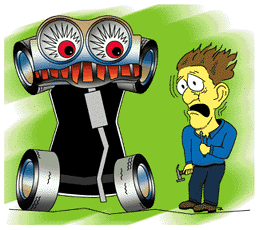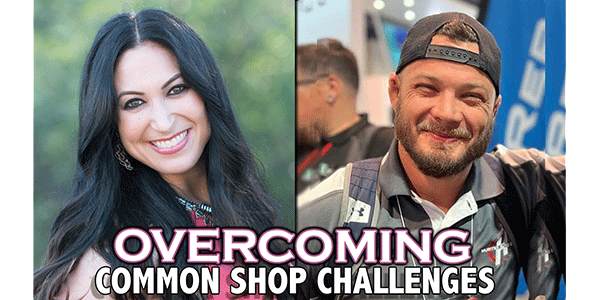
Manufacturing motor vehicles is a complex process that’s constantly evolving. More than ever, this evolution is resulting in changes to the manufacturing process that can affect the collision repair industry. For example, the recent proliferation of unisides has come as a result of improved manufacturing techniques at the factory. And assembling a vehicle body body from a few large components instead of many smaller components can help streamline the manufacturing process.
This evolution has created the need for automakers to ask collision repairers how to best supply these parts to the marketplace. While the method of gaining feedback and the method of supplying pillar components to the marketplace vary from manufacturer to manufacturer, there’s no lack of communication between the OEMs and the industry. However, before we get into the specifics of how the feedback process works, let’s first take a look at the complexities of the design process.
As brought out in Robert Murphy’s question, today’s motor vehicle bodies are a complex set of component systems designed to help protect the passenger during a collision. During the vehicle design process, several factors must be considered including:
- Safety: how the vehicle performs in a collision;
- Quality and Reliability: how durable a vehicle is;
- Aesthetics: how the vehicle looks;
- Serviceability: how easy it is for a service technician to repair a vehicle;
- Reparability: how repairable a vehicle is from a collision repairer’s point of view; and
- Vehicle Cost: how affordable a vehicle is for a consumer.

As you can imagine, balancing these factors is a complex task, and the approach varies from auto manufacturer to auto manufacturer. Furthermore, the solution is often influenced by factors such as manufacturing capabilities and available technologies. To complicate matters even further, consumers haven’t historically responded well to homogeneous vehicles that lack design character. And it’s of no value to anyone to produce a vehicle that’s simple to repair, but no one buys.
With all of the factors that must be balanced in the production and design of a vehicle and the service parts, Toyota recognizes that differences among the automakers are inevitable and understands that this creates a responsibility to provide support to the industry that goes beyond simply providing service parts. An array of service information combined with technician training is fundamental to the repair process.
Though we can’t speak for all auto manufacturers, we can begin to answer Murphy’s question by discussing what Toyota is doing to keep the lines of communication open.
Service Parts
The center of a repair from a repairer’s standpoint is the service part. However, the logic from a manufacturer’s standpoint is quite the opposite. Vehicle design ultimately defines the repair standards and parts design. Industry feedback acts as the check, and Toyota personnel provide the balance in the parts design process. As it relates to Murphy’s question, Toyota currently supplies a- and b-pillars, quarter panels and rocker panels as individual components for most Toyota vehicles. However, service parts design may change depending on how future vehicles are produced and industry consensus when the service parts for a specific vehicle are designed.
Repair Information
Of equal importance to parts quality is the publication of repair standards and the availability of training. To help ensure that collision repairers understand the proper procedure for installing Genuine Toyota Parts, Toyota provides a series of publications on recommended repair procedures, along with training. The publications are:
- Vehicle Specific Repair Manuals for Collision Damage – Released at or near vehicle launch, Vehicle Specific Repair Manuals for Collision Damage are the centerpiece of Toyota’s support to the collision repair industry. These manuals provide the collision repair technician with Toyota’s recommended repair procedures. To help make the manuals affordable to more repairers, manuals are reasonably priced and updated only when a body platform is changed. This means that most repair manuals for collision repair typically have a life expectancy of at least four years.
Following Toyota procedures helps make the repair process much more rational and understandable by providing the following information:
- Cut-and-join locations;
- Weld points, including the number and type of welds used;
- Vehicle dimensions;
- Foamed material application areas;
- The location of components made with High Strength Steel (HSS);
- The application of anti-chip agents and sound-deadening pads; and
- Seam sealer application areas.
Repair manuals for collision damage describe all of these features, making the repair quicker and easier, and helping to ensure future vehicle strength. Providing cut-and-join locations helps technicians to understand the proper procedure for repairing a vehicle, regardless of whether it’s available as an individual section or if it’s necessary to trim a service part provided as a uniside. Using these manuals as a guide also helps to improve estimate accuracy by providing exact repair procedures.
In addition to cut-and-join locations, body repair manuals provide a tremendous amount of information that can be used to answer elusive questions. Painters can identify the location of anti-corrosion and anti-chipping applications; body technicians can use the manual to identify the location of HSS, the correct application of panel foam, the material composition of plastic parts and the Toyota factory body dimensions.
- Collision Repair Information Bulletins (CRIBs) – Confusion about a topic results from of a lack of concise information or the lack of a recommendation against a specific procedure. In those cases, Toyota will publish a CRIB to communicate the recommended procedures. Currently there are nearly 120 CRIBs in circulation, with Toyota publishing between 10-20 per year. CRIBs are nearly a must-have for any repair shop that seeks printed support for performing quality repairs.
Past CRIB topics include:
- Panel bonding;
- Solvent blending;
- Paint codes;
- SRS Component Replacement Procedures;
- Guidelines for handling damaged door intrusion beams; and
- Toyota guidelines for stress relieving.
CRIBs can be ordered through your local Toyota dealer or through the Toyota Material Distribution Center.
- “Collision Pros” – “Collision Pros” is Toyota’s quarterly collision industry publication that’s inserted into BodyShop Business. To receive a free subscription to “Collision Pros,” e-mail your name and address to [email protected]. (The most recent issue is featured in the February 2002 edition of BSB.)
“Collision Pros” contains discussion on timely topics. For example, the latest edition features a discussion on how the Toyota feedback process works, a topic that can help the industry understand how to get information back to Toyota. “Collision Pros” also contains information on upcoming or recently introduced Toyota vehicles. Around the time of a new vehicle launch, “Collision Pros” features a basic overview of a vehicle from a collision repairer’s standpoint and highlights major procedural changes.
Training Availability
Quality parts and proper procedures quickly lose their value if collision repair technicians lack the expertise to understand and implement the procedures. That’s why Toyota is active in technician training at many levels:
- Automotive Youth Education System (AYES): AYES is a program geared to generate interest in the automotive repair industry at the high-school level. This program – sponsored by Toyota, General Motors, Daimler Chrysler, Mercedes, Volkswagen, Audi, Honda, Subaru, BMW and Ford – is designed to provide quality technical training to high-school students at a time when a budding interest in automotive repair may be emerging.
- Toyota Technical Education Network (T-TEN): T-TEN is a Toyota-sponsored program developed to support junior or community colleges. Toyota supports these schools with Toyota curricula, repair publications, vehicles and parts. T-TEN has stringent curriculum requirements and teaches Toyota factory-recommended procedures at a time when technicians are still learning good and bad habits. The eventual goal is to help ensure that entry-level technicians have a fundamental understanding of how to best repair a vehicle.
- Toyota Collision Repair & Refinish Training: The Toyota training program was developed to enhance the skills of experienced collision repair technicians. Courses are taught by Toyota personnel and combine classroom and lab time to maximize the experience. Technicians attending the program learn first-hand how to repair Toyota cars and trucks using current vehicles. For example, the Toyota Structural and Non-Structural Repair Techniques training courses feature information on how to install pillar, rocker and quarter panels.
The biggest challenge automakers face is letting the industry know what kind of support is available to the marketplace.
Back to Murphy’s Question
Murphy asked how specifications are determined. Put simply, Toyota engineers consider reparability and industry feedback when designing a vehicle, and the service division considers industry feedback when developing the service parts and repair standards. This information is relayed to the engineers and service division in several ways:
- Industry participation: Through the Toyota Certified Collision Center Program and the Toyota Collision Repair and Refinish Training Program, Toyota personnel are in direct contact with repair technicians and body shop managers. The feedback provided in these relationships is sent back to the vehicle engineers and services division.
- Industry Involvement: Toyota representatives are actively involved with the CIC; sit on the board of I-CAR, ASE and NATEF; provide information to and field requests from ASA; are actively involved with I-CAR; and meet regularly with various state autobody associations. In many cases, we provide information and financial support to these groups. Most of the time, however, we listen to what’s being said and respond in the best way possible. The response often comes in the form of a Collision Repair Information Bulletin (CRIB). Other times, information results in changes to repair procedures, service parts and/or vehicle designs.
- Traditional Feedback Mechanisms: Virtually all automakers (including Toyota) obtain industry feedback from their dealer body. Questions posed to a parts manager are often relayed to the appropriate field representatives, who, in turn, pass the information to the quality department. Recurring questions often result in improvements.
- Other Feedback Mechanisms: Toyota publishes “Collision Pros” quarterly and solicits industry feedback. Also, the “Collision Pros” e-mail address ([email protected]) is a forum for asking questions of Toyota personnel directly.
- Solicited Feedback: Toyota occasionally holds focus group meetings with technicians and shop managers. In these meetings, Toyota engineers ask repairers about specific topics for their feedback and then open the floor for other topics. Interestingly, the best way to provide pillar, rocker and quarter panel components was discussed at the last focus group held at NACE. Toyota is currently reviewing the topic to determine industry consensus and to define the most practical approach in the future. Regardless of the direction Toyota chooses, repairers can be assured that the appropriate sectioning information and repair procedures will continually be made available to the industry.
Simplifying a Complex Process
Because manufacturing motor vehicles requires the consideration of many factors, the design of service parts is variable. To ensure these designs make sense, vehicle manufacturers in general – and Toyota in particular – are in constant contact with the industry. This feedback is balanced against feedback from consumers and service technicians, and practical changes are incorporated into future designs.
For repairers who don’t have a direct link to an OEM, trade associations – such as ASA, ASE, I-CAR, the SCRS and state autobody associations – do a good job of supplying this feedback to the appropriate manufacturer.
In addition, a wide variety of materials and services are offered to help ensure that the correct installation procedures are understood by the industry. Toyota and many other manufacturers understand that quality parts and support are no substitute for listening and responding to the marketplace. As a result, you can continue to expect to see an evolving marketplace – along with continually evolving support.













